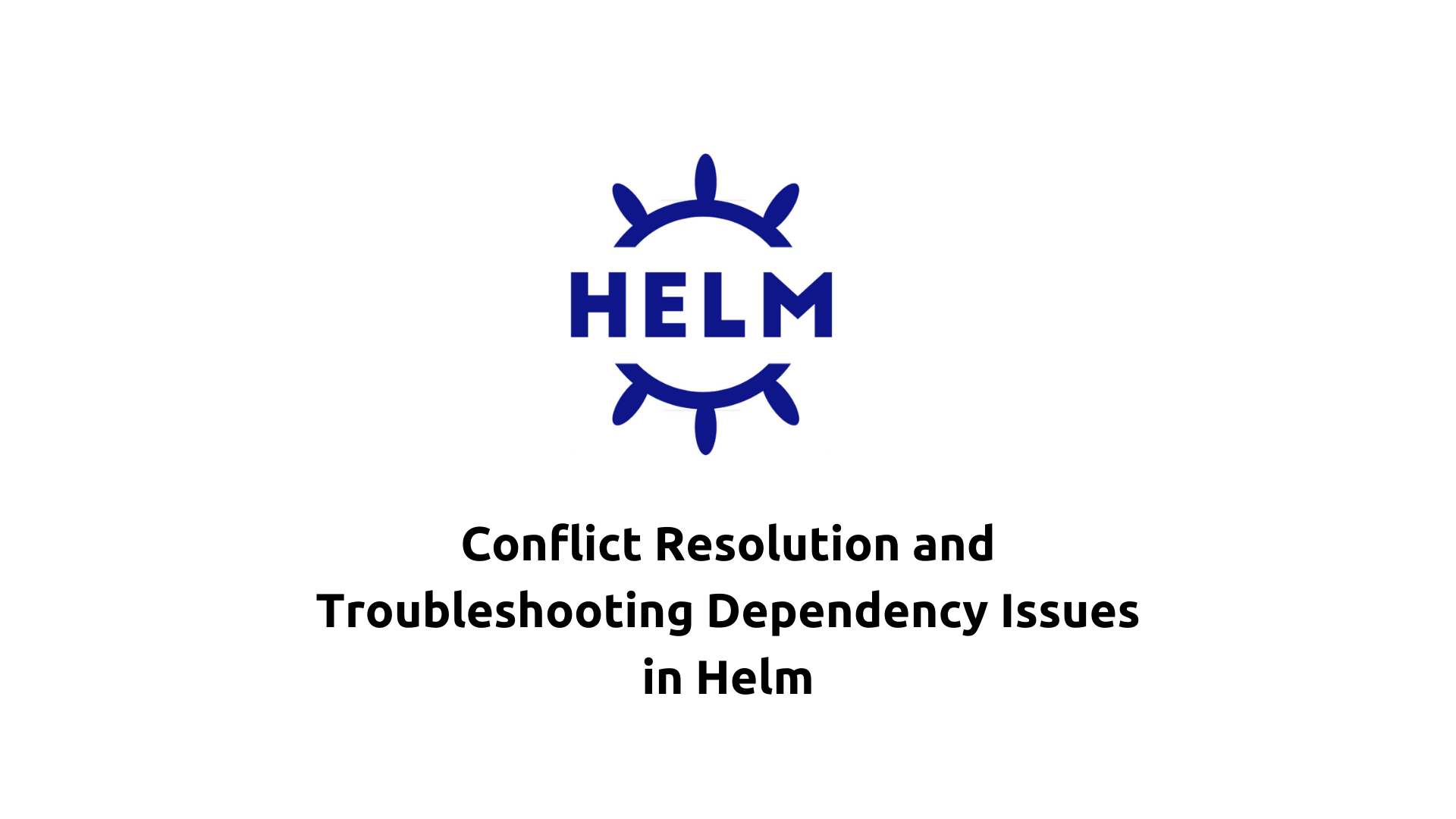Conflict Resolution and Troubleshooting Dependency Issues in Helm
 Saurabh Adhau
Saurabh AdhauTable of contents

Introduction
Helm, the Kubernetes package manager, simplifies the deployment and management of applications in Kubernetes clusters. However, like any powerful tool, Helm comes with its own set of challenges, including conflicts and dependency issues. In this article, we'll explore strategies for handling conflicts and troubleshooting dependency issues specifically within the Helm ecosystem, supported by practical examples.
Understanding Helm Dependency Issues
Helm charts often depend on external packages or repositories for their functionality. When these dependencies conflict or become outdated, it can lead to deployment failures, inconsistencies, or unexpected behavior in your Kubernetes environment.
Example 1: Conflicting Chart Dependencies
Imagine you're deploying a complex application using Helm, and two of your charts depend on different versions of the same library. This results in a conflict during the deployment process, causing errors and preventing the application from running successfully.
Resolution Strategy:
Dependency Analysis: Use the
helm dependency listcommand to identify conflicting dependencies within your charts.Version Pinning: Update your
requirements.yamlfile to pin the versions of conflicting dependencies to compatible versions.Chart Overrides: Modify your Helm values files to specify the correct versions or configurations for conflicting dependencies.
Chart Forking: In extreme cases, fork the problematic charts and manually resolve the dependency conflicts within your forked copies.
Example 2: Outdated Chart Dependencies
In another scenario, you're deploying an application using Helm, but one of your charts relies on a deprecated or obsolete external repository. As a result, Helm fails to fetch the necessary dependencies, leading to deployment issues.
Resolution Strategy:
Repository Update: Check if the external repository hosting the dependency has been updated or moved. Update your
repositories.yamlfile with the new repository URL if necessary.Local Repository Mirroring: If the external repository is no longer available, consider mirroring it locally to ensure continued access to the required dependencies.
Dependency Substitution: Replace the outdated dependency with an alternative or compatible version available from a different repository.
Chart Forking and Modification: Fork the problematic chart and manually update the dependency references to point to a compatible version or repository.
General Strategies for Conflict Resolution and Troubleshooting in Helm
Thorough Testing: Test your Helm charts thoroughly in a staging environment to identify and resolve dependency issues before deploying to production.
Version Management: Regularly update your Helm charts and dependencies to leverage the latest features, bug fixes, and security patches.
Community Support: Engage with the Helm community through forums, discussion groups, or GitHub repositories to seek assistance and share experiences with troubleshooting dependency issues.
Documentation and Best Practices: Follow Helm's documentation and best practices for managing dependencies, versioning, and troubleshooting common issues.
Conclusion
Handling conflicts and troubleshooting dependency issues in Helm is crucial for ensuring smooth and reliable deployments in Kubernetes environments. By leveraging Helm's tools and best practices, along with proactive testing and community support, developers can effectively manage and resolve dependency challenges to achieve successful deployments. Realistic examples illustrate the importance of these strategies in overcoming common hurdles encountered when working with Helm charts and dependencies, ultimately contributing to the stability and scalability of Kubernetes applications.
Subscribe to my newsletter
Read articles from Saurabh Adhau directly inside your inbox. Subscribe to the newsletter, and don't miss out.
Written by

Saurabh Adhau
Saurabh Adhau
As a DevOps Engineer, I thrive in the cloud and command a vast arsenal of tools and technologies: ☁️ AWS and Azure Cloud: Where the sky is the limit, I ensure applications soar. 🔨 DevOps Toolbelt: Git, GitHub, GitLab – I master them all for smooth development workflows. 🧱 Infrastructure as Code: Terraform and Ansible sculpt infrastructure like a masterpiece. 🐳 Containerization: With Docker, I package applications for effortless deployment. 🚀 Orchestration: Kubernetes conducts my application symphonies. 🌐 Web Servers: Nginx and Apache, my trusted gatekeepers of the web.